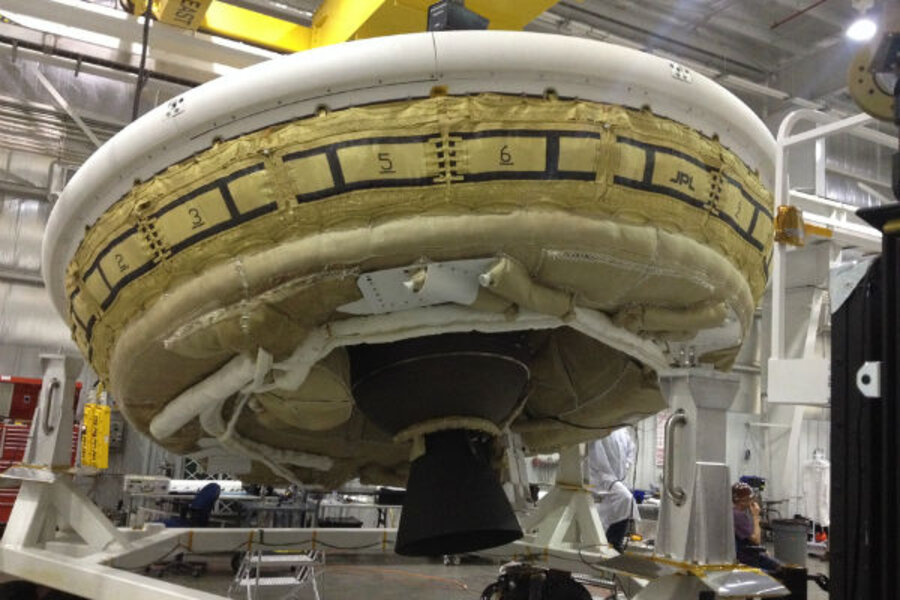NASA to test 'flying saucer' designed to prevent crash landings ... on Mars
Loading...
NASA may launch a real-life flying saucer Tuesday that could be a first step to bringing man to Mars.
NASA investigators are currently positioned at the US Navy’s Pacific Missile Range Facility in Kauai, Hawaii, waiting for the right weather conditions to test two new technologies that would let the space agency land much larger, and potentially manned, spacecraft on the red planet.
“Landing on Mars is an extremely challenging thing to do,” Ian Clark of NASA's Jet Propulsion Laboratory said at a press briefing from Kauai. “If you are going to cast your eyes on the prize of landing people on Mars, you’re going to need extremely large drag devices to slow those vehicles down.”
It takes a whole lot of engineering to slow a spacecraft that has been hurtling through space at Mach 4 to a speed that would let it safely enter Mars’ ultrathin atmosphere. The parachute technology used to deliver the Curiosity rover to Mars in 2012 dates to the 1976 Viking program and is woefully inadequate to guide larger payloads, Dr. Clark said.
Clark is the principal investigator for NASA’s Low Density Supersonic Decelerator (LDSD) program, and he has led the development of two new devices to help ease large spacecrafts’ entry into Mars' atmosphere.
The first device is a six-meter (20-foot) inflatable doughnut known as the supersonic inflatable aerodynamic decelerator (SAID-R) that encircles the saucer-shaped craft. Once deployed, SAID increases the diameter of the craft and creates enough drag – theoretically – to slow the vehicle from Mach 3.8 to Mach 2.7.
The second device, a supersonic parachute, made of Kevlar covered in a special coating designed to withstand temperatures up to 600 degrees Fahrenheit, slows the craft even further.
Testing the new technologies presents enormous logistical challenges. For instance, engineers must manage to get the craft to the upper stratosphere, where conditions are akin to those of the Martian atmosphere. That's four times higher than a plane would fly, LDSD project manager Mark Adler said at the briefing.
"We use a helium balloon – that, when fully inflated, would fit snugly into Pasadena's Rose Bowl – to lift our vehicle to 120,000 feet," Dr. Adler, architect of the Mars Exploration Program, said in a statement. "From there, we drop it for about one-and-a-half seconds. After that, it's all about going higher and faster – and then it's about putting on the brakes."
There will be several opportunities to put the two new braking systems to the test over the Pacific Ocean during the next two weeks. The first comes Tuesday, but the winds need to be just right to carry the balloon over the water in the right direction, Adler told reporters.
NASA will post updates to social media and the agency website, and it will broadcast live footage of the test on NASA.gov and NASA TV.
If all goes well, Clark, Adler, and their team will return to the Jet Propulsion Lab and begin work to scale up the SAID system to an 8-meter design that would be more flexible. The eventual goal is to create a deceleration system capable of guiding enough cargo to support humans on the Mars surface.
“We need to get to 20 to 40 tons to put people on Mars, but we can’t do that in one step,” Clark said.






